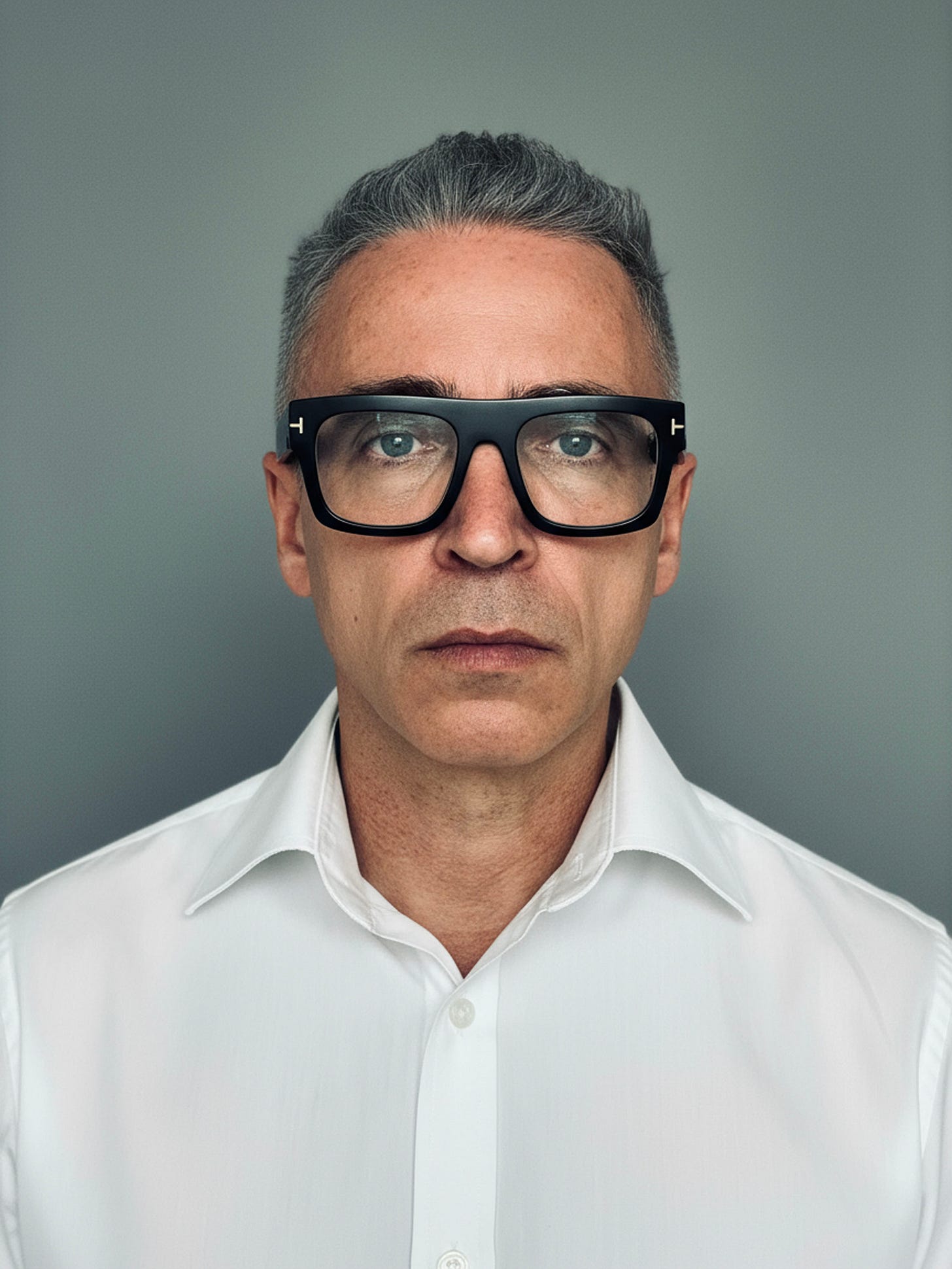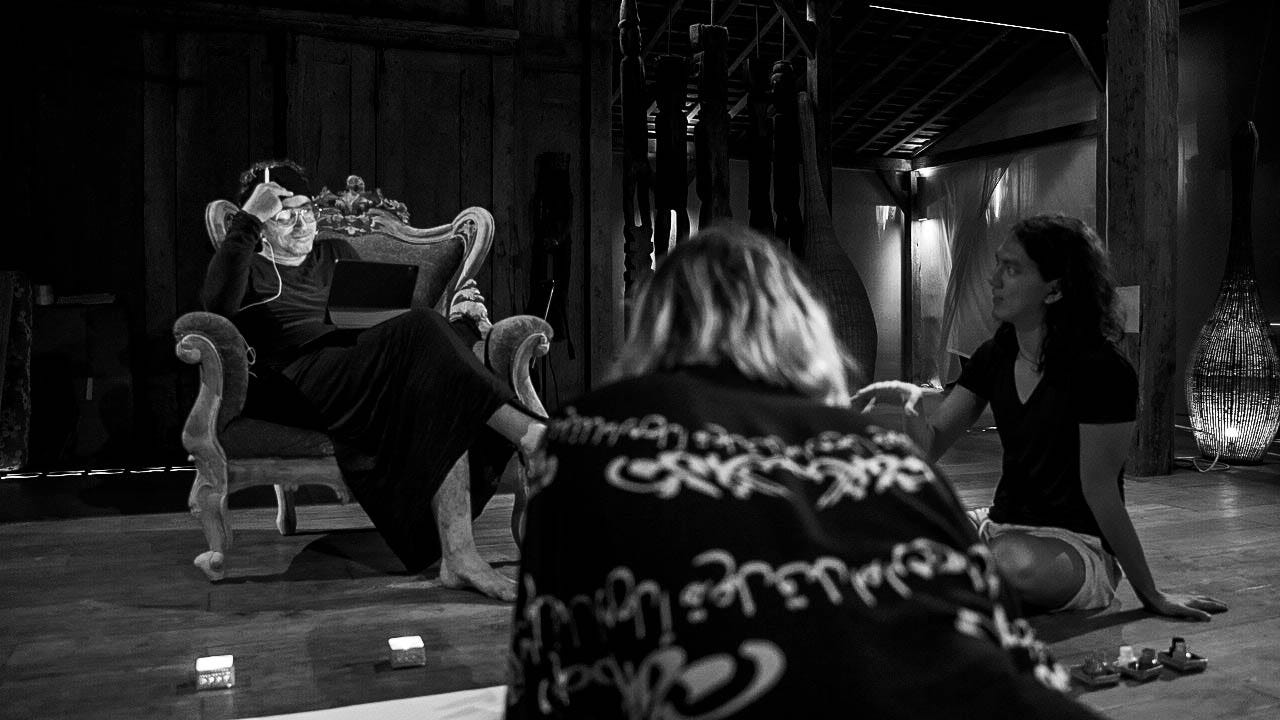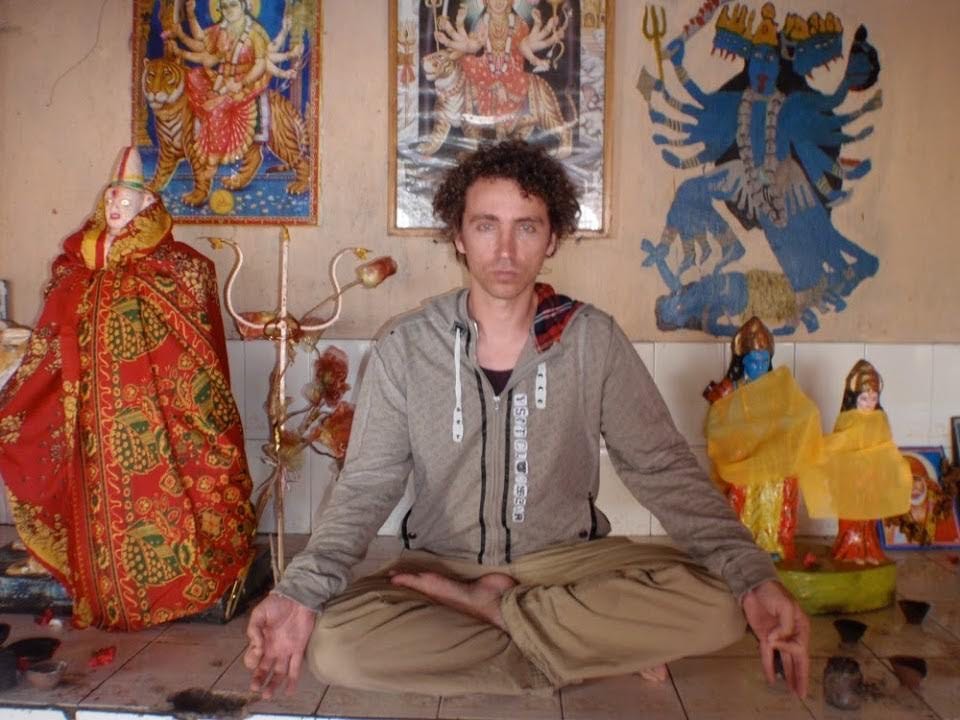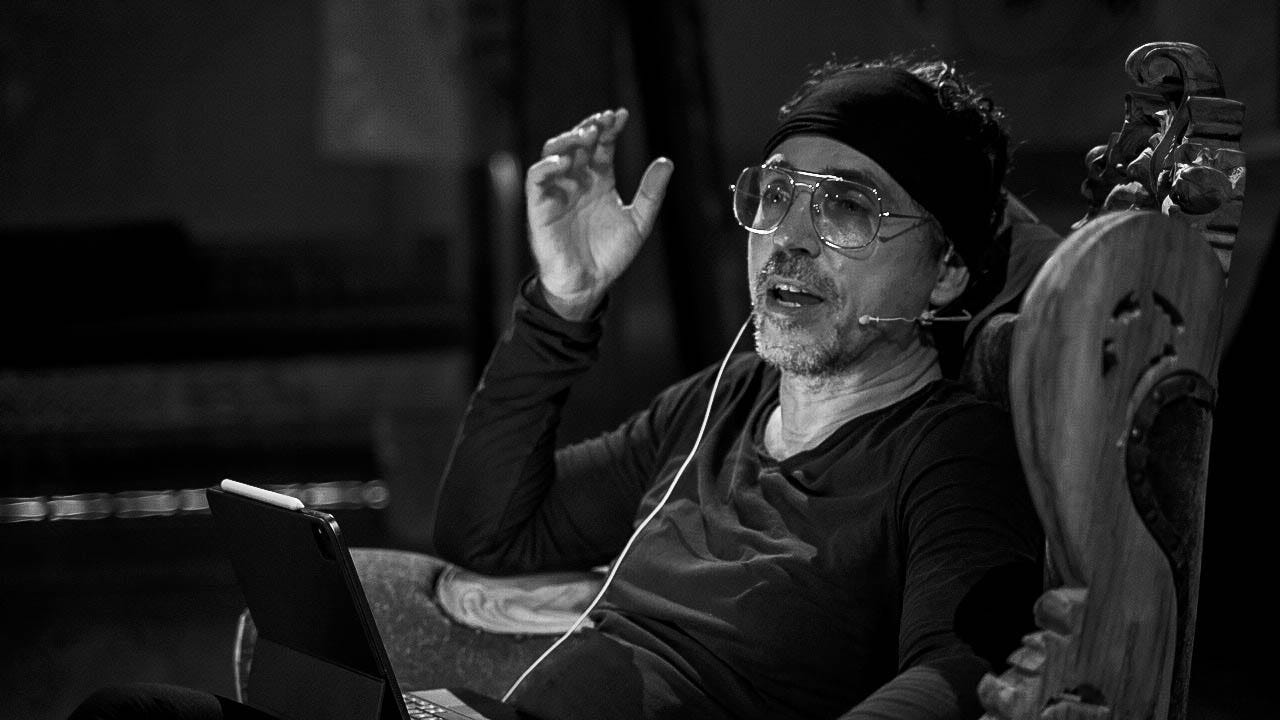Forbidden-Yoga: Guardian of India’s Vanishing Left-Handed Tantric Heritage
A deep dive - Michael Perin Wogenburg’s Forbidden Yoga in the context of lost Indian tantric heritage
google notebook LM podcast
The Indiana Jones of Mystical Spirituality and the Traditions That Nearly Disappeared
In the sprawling landscape of modern wellness, where ancient practices are routinely repackaged and sanitized for Western consumption, one man has dedicated over twenty-five years to an entirely different mission: collecting and preserving the actual lost practices of Indian spirituality - the ones that scholars can barely trace, that gurus refuse to discuss, and that have been systematically erased from the historical record. Michael Perin Wogenburg, founder of Forbidden Yoga, has become what one observer calls the “Indiana Jones of mystical spirituality,” exploring territories that most spiritual teachers actively avoid, recovering fragments of traditions that academic experts admit they cannot fully understand.
The Lineage That Chose Him
Wogenburg carries a West Bengal left-handed Shakta tantric lineage, a tradition so obscure that he himself describes its transmission in almost mystical terms: “I never asked for it and nobody invited me to it. It simply took me.” There are no papers, no institutional certifications, no formal documentation of this inheritance. Instead, there are only “echoes of previous holders, drifting through the inner space, sometimes like a whisper, sometimes like a firm hand on the shoulder.”
This is not the sanitized tantra of modern yoga studios, where “namaste-hugging” and eye-gazing exercises constitute the practice. As Wogenburg bluntly states, “Ancient Tantra, in stark contrast to the modern ‘Namaste-hugging’ Tantra, did not ritualize sexuality but sought to sexualize ritual.” The practices he preserves are from what he calls vama marga - the left-handed path - traditions that work directly with sexual energy, consciousness alteration, and what he terms “the primordial fountain of orgasmic life energy.”
Most Indian Sources That Once Described This Are Extinct
The brutal reality that frames Wogenburg’s work is stated plainly in his own writings. The left-handed tantric traditions of Bengal, which once formed a sophisticated system of consciousness practices rooted in sexual energy work, have been systematically weakened by centuries of invasion, colonial rule and modern cultural sanitisation.
Even Arthur Avalon, Sir John George Woodroffe, the pioneering early twentieth-century scholar who first translated tantric texts for Western audiences, had to adopt a pseudonym to publish his work. The practices he documented, already controversial in their time, represented only the most philosophically acceptable fragments of a far more extensive tradition. What Wogenburg has uncovered points to layers of practice that were intentionally kept secret even from many tantric practitioners.
He notes that even when he consults gurus and scholarly experts, few are able to trace the origins or fully grasp the meanings embedded in these ancient techniques. The knowledge has been lost not only from public discourse but also from the living memory of most lineage holders. What remains are fragments, ritual sequences whose original context has vanished, breathing patterns cut off from their philosophical framework, visualisations whose symbolic language has been forgotten.
The Problem of Unavailability: Why These Traditions Disappeared
The unavailability of left-handed tantric knowledge unfolds on several levels. Historical rupture came first. The Islamic conquests of Bengal in the 12th–14th centuries decimated temple traditions and forced surviving practitioners underground. British colonial rule added another layer of suppression as Victorian morality outlawed rituals involving sexuality, wine, and trance. By the time India gained independence, the very word tantra had become a cultural embarrassment, associated with superstition rather than wisdom.
Yet secrecy was always part of the design. Left-handed tantra was meant to be inaccessible to the uninitiated. Its texts were composed in sandhyā bhāṣā, the “twilight language,” where common words hid coded meanings. Essential instructions were transmitted orally from guru to disciple, and sexual rites were reserved for the few who had undergone years of purification and preparatory practice.
As Wogenburg writes of his own lineage, “It is done in small circles. Not for the public. In truth it is not done for anyone. The fountain overflows by itself, and others drink from it without knowing why.” This exclusivity was not elitism but protection l, of the practices from distortion and of practitioners from misuse.
The final veil of unavailability lies in what Wogenburg calls the hologram problem. These methods do not function when extracted from their symbolic universe. They belong to what he describes as a “metaphysical hologram,” a living field of codes, deities, mantras, and sensory mappings. Removed from that field, they collapse into empty gestures. Modern “tantric sex” workshops fail, he argues, not because the techniques are incorrect but because “they fail to encode the mystical brain patterns of the ancient metaphysical hologram.”
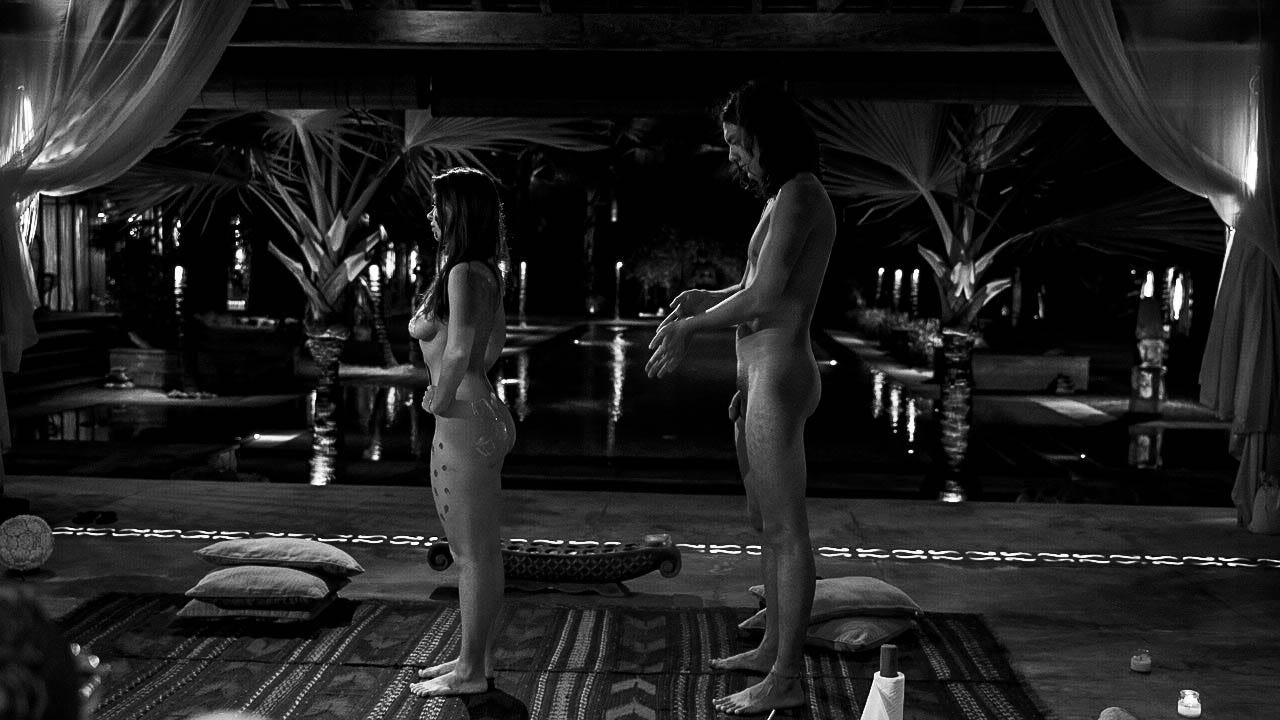
Pratyayasarga Sadhana: The Extinct Tradition of Thought Manipulation
One of the most striking examples is Pratyayasarga Sādhana, which Wogenburg describes as originating from “an extinguished Tantric tradition” of West Bengal. The practice trains the mind to amplify its own thoughts, both primary (intrinsic, self-originated) and secondary (conflicted or socially conditioned) until they reach the point of absurdity. Practitioners take a passing thought and “spin” it into a full-blown inner film, often grotesque or surreal, while maintaining awareness of the process.
The goal is not the content of these mental stories but the development of conscious control over thought itself. By stretching the imagination to extremes, practitioners learn to distinguish between thoughts that are genuinely theirs and those implanted by conditioning. As Wogenburg writes, “Only if the primary thought can exist without the secondary can true manifestation happen. To reach that, you must kill the Vaikṛta, the secondary thought by pushing it into the realm of comedic absurdity.”
He notes that the practice is “rooted in ancient Tantric traditions of West Bengal traditions that have nearly vanished, surviving only as echoes through the ages.” Wogenburg has found no academic record of Pratyayasarga and reports that even seasoned scholars are unfamiliar with the term.
Yogini Nyasa Vishuddha: Projecting Consciousness Beyond Physical Space
Another advanced practice that Wogenburg teaches privately is Yoginī Nyāsa Viśuddha, which he describes as “the essence of real Forbidden Yoga.” Unlike standard nyāsa rituals, where mantras are placed upon specific body parts, this technique involves projecting the chakras themselves into outer space. Practitioners visualize themselves seated “within brutalist architectural structures on Alpha Centauri,” performing mantra invocations not merely in the room but “atop the sixteen petals of the Viśuddha chakra in another realm of reality.”
The purpose is not literal space travel but the expansion of consciousness beyond physical boundaries. The practice trains the mind to operate within non-physical dimensions, strengthening subtle perception and spatial awareness. Wogenburg notes that it is designed for “high-performance individuals” whose “brainwaves differ significantly from those of ordinary practitioners” and who “require complex, almost mathematical meditations to achieve peace.”
This exercise illustrates what he calls the metaphysical hologram, a symbolic architecture that must remain intact for the practices to function. Through Yoginī Nyāsa Viśuddha, the practitioner learns to inhabit this hologram consciously, navigating between inner and cosmic space as reflections of the same field of awareness.
Shakti Peetha Nyasa: Reclaiming Pre-Yoga Nidra Consciousness Technology
Perhaps most significantly, Wogenburg has reconstructed Śakti Pīṭha Nyāsa, a practice he presents as one of the true precursors to modern Yoga Nidra. Its cosmology reaches back to the Puranic myth of Satī, the goddess who, unable to bear the humiliation of her beloved Śiva, immolated herself and was later reborn as Pārvatī. As her body was carried through the sky, it fell to Earth in fragments, creating the sacred pīṭhas, or “seats” of Śakti.
In Wogenburg’s interpretation, this myth is not simply a love story but a map of consciousness: the dismemberment of Satī represents the fragmentation of the human field, and the nyāsa, the re-placement of energy points on the body becomes the ritual act of reintegration. Through Śakti Pīṭha Nyāsa, the practitioner reconfigures their own energetic anatomy, reassembling the dispersed goddess within themselves.
Wogenburg identifies this as an early form of what would later evolve into Yoga Nidra, though without the modern framework of saṅkalpa or guided intention. Instead, the process functions through silent re-embodiment: attention moves from point to point across the subtle body, not to affirm or visualize, but to awaken dormant intelligence in each center. “You do not program the mind,” he writes, “you remember the goddess in her scattered forms.”
He further observes, “It is fascinating how today’s Yoga Nidra movement, while popular, doesn’t open the gates to the ancient hologram. Perhaps its superficiality is intentional, to protect the metaphysical realms from intruders. Every realm of reality has its own bodyguards.”
“Uus”: The Extended Trataka That Opens Mystical Brain Centers
Among the most enigmatic practices is what Wogenburg calls “Uus,” the long U of Sanskrit vowels. He describes it as a magical extension of what is today only faintly remembered as Candle Trataka. The practice involves not just staring at a flame but entering a sequence of optical inversions that defy the limits of normal perception. The student is asked to see unlit candles as if they were lit, to focus on the darkness where light should appear, or to imagine several flames burning in different places at the same time.
The human visual system cannot truly perform these tasks. The eyes cannot look at two objects simultaneously or perceive absence and presence together. Uus intentionally brings the mind to this point of breakdown. It is an experiment in seeing the impossible.
Because of this, Uus is rarely taught outside very small circles. It can be disorienting and should not be attempted with ordinary yoga students. It pushes perception to a level where even the most experienced practitioners cannot fully explain the neurological mechanism behind it. Wogenburg notes that it produces a fascination that borders on the irrational. “You begin to realize,” he writes, “that the eyes are not only physical organs. They are woven from mind itself.”
The purpose of Uus is not concentration but transformation. It appears to activate brain regions that are normally dormant, bypassing symbolic imagination and verbal thinking altogether. Wogenburg admits that even within his lineage, no one can describe its exact workings. “We know what it does,” he says, “but not how it does it. It opens a gate, yet to what exactly, no one can say.”
The Sexual Current: What Scholars Won’t Discuss
At the core of Wogenburg’s lineage lies what most academic studies approach with caution: the direct use of sexual energy as the main vehicle for transformation. Scholars such as Alexis Sanderson and David Gordon White have acknowledged the presence of sexual rites in tantra but tend to frame them as symbolic or peripheral. Wogenburg’s tradition holds the opposite view. In his work, sexual energy is not a metaphor but the primary technology through which consciousness is altered.
“In the Forbidden Yoga lineage,” he writes, “a modern name for a very old left-handed Shakta Tantra stream, the energy moves through sexual current. This does not mean constant intercourse. It means allowing the sexual instinct to become the compass. The entire task is to accumulate more and more sexual fuel in the body so that the being begins to merge with the primordial fountain of orgasmic life energy.”
This is where the problem of unavailability becomes most visible. Scholars can discuss Shakti as creative power and translate Sanskrit verses on Kundalini rising through the chakras, but they cannot transmit the lived techniques of sexual energy cultivation. These methods are guarded, culturally taboo, and dependent on direct guidance.
Wogenburg often points to the parallel found in Chinese Daoist teachings of the White Dragon. “They speak with precision about the same fountain,” he notes. Practices such as jing retention, internal alchemy, and sexual sublimation have survived in China more fully than in India because they faced less moral censorship. Even there, however, they remain discreet and rarely taught openly.
For Wogenburg, the sexual current is not about pleasure or erotic freedom. It is the raw fuel of consciousness itself. When harnessed through ritual and awareness, it becomes the means by which the practitioner unites with the creative pulse of existence.
The Lineage Function: Not Enlightenment But Transmission
Wogenburg’s most provocative claim is that even the most serious tantric scholars are often unable to trace the origins of the practices he works with. This is not a dismissal of their competence but an acknowledgment of how completely certain lineages have been erased. What survives in written form reflects only the most philosophical and least transgressive aspects of tantra: the works of Abhinavagupta, the metaphysics of Kashmir Shaivism, and symbolic interpretations that have lost their ritual context.
The actual technologies of left-handed practice, such as partner meditations, menstrual fluid rites, and the cultivation of sexual energy, were deliberately excluded from formal texts or encoded in language so obscure that their meaning disappeared. Even when manuscripts survived, the oral transmissions that made them functional did not.
Anthropologist June McDaniel observed that Bengali Shakta tantra often emphasizes death imagery rather than sexual ritual. This, she explains, is what remains accessible to field researchers. The sexual practices certainly existed, appearing in texts like the Yoni Tantra and the Kaulajnananirnaya, yet they were driven so far underground that even modern ethnographers in Bengal could find only hints of them.
Wogenburg has encountered this limitation repeatedly. Scholars can analyze philosophy, but when he asks about practice, few can trace the roots or decode the experiential framework behind it. The surviving fragments are scattered across centuries: a breathing rhythm here, a visualization there, but no complete system that carries the original charge.uu
The Problem of Cultural Appropriation vs. Cultural Preservation
Wogenburg is acutely aware of the colonial dynamics at play when a European man becomes the custodian of South Asian spiritual traditions. In the Richard Williams interview, he explicitly discusses the risks of “cultural appropriation” and “neo-colonial attitude” in the luxury wellness industry, where “ancient spiritual practices are often imported and integrated into Western luxury retreat centres, repackaged for modern audiences seeking exotic and transformative experiences.”
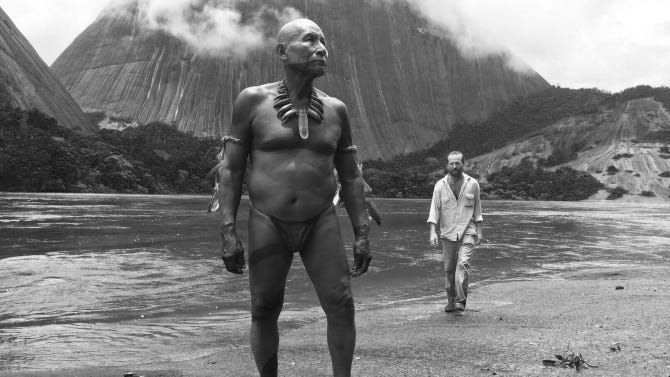
His response is to invoke the film “Embrace of the Serpent,” which explores how an anthropologist’s study of indigenous medicine traditions is revealed to be corporate exploitation in disguise. But Wogenburg suggests that when done “thoughtfully and consciously, what often is critiqued as cultural appropriation can instead become an enriching adventure that broadens understanding and appreciation among diverse audiences.”
The implicit argument is that when the actual Indian culture no longer remembers or values these traditions - when they have been suppressed by Indian nationalism as embarrassing remnants of a backward past - preservation by an outsider may be the only way they survive. This is a deeply uncomfortable position that raises legitimate questions about who has the authority to represent tradition.
But it also points to a historical reality: many of the most important tantric scholars have been non-Indians (Woodroffe, Sanderson, White, Hugh Urban), partly because Indian academia has been reluctant to seriously engage with traditions that contradict official narratives about spirituality being purely philosophical and non-sexual. The very “forbiddenness” of these practices has made them unavailable to Indians as well as to Westerners.
The Contemporary Challenge: Unavailability in the Age of Information
What makes the unavailability of left-handed tantric knowledge particularly striking is that it persists in an age when information about almost everything else is readily accessible. You can find detailed instructions for Tibetan Buddhist practices online, you can watch video tutorials of complex Hatha Yoga sequences, you can read translations of obscure Vedantic texts. But the actual practices of Kaula tantra, Bengali Shakta sexual rituals, and left-handed Shakti worship remain almost completely unavailable.
The reasons are multiple. First, the traditions themselves were designed for restricted transmission - they were never intended to be publicly available. Second, the cultural taboos around sexuality remain so strong that even knowledgeable practitioners won’t discuss these practices openly. Third, the practices may genuinely require careful guidance and preparation, such that making them freely available would be irresponsible.
But there’s also what Wogenburg calls the “hologram” problem. These aren’t techniques that can be learned through instruction - they require entry into a complete symbolic universe. “The fountain has its own intelligence,” he writes. “It contains an unbelievable amount of joy, a kind of bubbling, intoxicating radiance. Later people began to call that God.” This experiential dimension cannot be conveyed through books or videos; it requires direct transmission from someone who already inhabits that space.
The Darkest Claim: Are These Traditions Truly Extinct?
The most sobering possibility raised by Wogenburg’s work is that what he has recovered represents not a living tradition but archaeological fragments. When he writes that “most Indian sources that once described this are extinct,” he may be describing not just textual sources but the traditions themselves.
Consider: if Wogenburg himself admits that even gurus cannot trace these practices, if scholars acknowledge they cannot fully understand the techniques, if the practices exist only as “echoes of previous holders,” then what we’re witnessing may be something closer to historical recreation than authentic transmission. Wogenburg has assembled fragments from various sources - oral teachings from elderly practitioners, obscure manuscript references, personal experimentation - into a coherent system. But is that system identical to what existed in 10th-century Bengal?
This is not to diminish what Wogenburg has accomplished. Historical recreation of lost traditions has tremendous value - it preserves something that would otherwise disappear entirely, it provides contemporary access to powerful practices, and it keeps alive the possibility that these traditions might resurface more completely in the future. But it’s worth being honest about the extent of the loss.
The reality is that no one alive today has unbroken direct transmission from the original Kaula practitioners of Kashmir, or the left-handed Bengali Shaktas, or the pre-Vedic tantric traditions Wogenburg claims to access. The chain has been broken - by conquest, by cultural suppression, by the deaths of lineage holders who failed to find qualified successors. What Wogenburg offers is perhaps the best approximation currently available, assembled with scholarly rigor and twenty-five years of practice and research. But it’s an approximation nonetheless.
What Makes Forbidden Yoga “Forbidden”: The Modern Context
The term “Forbidden Yoga” operates on multiple levels. Most obviously, it refers to practices that were forbidden by religious orthodoxy, colonial law, and modern cultural norms. But it also suggests practices that are forbidden in the sense of being unavailable, restricted, hidden from public view.
Wogenburg’s marketing explicitly emphasizes the transgressive elements - nudity, sexual practices, confrontational psychological work, unconventional environments. But beneath the provocative surface is a more serious claim: that authentic tantric practice is inherently transgressive because it works directly with desire rather than attempting to transcend it. “Dharma never asks you to suppress what you are,” he writes. “It invites you to reveal it fully.”
This is what distinguishes left-handed tantra from the sanitized versions that dominate modern yoga culture. Bihar School of Yoga, for instance, explicitly rejects left-handed practices, stating: “If by drinking wine one were able to reach self-realisation, every drunkard in the world would be realised.” But this misses the point - the wine, the sex, the menstrual blood were never supposed to mechanically produce enlightenment. They were elements of a ritual technology designed to break conventional mental patterns and access non-ordinary states of consciousness.
The “forbidden” nature of these practices is inseparable from their function. They work precisely because they violate taboos, because they confront practitioners with socially forbidden desires and behaviors. Sanitize them, and they lose their power. This is why, Wogenburg argues, modern tantra workshops with their “dancing and eye-gazing” fail to produce the consciousness shifts of the original traditions.
The Question of Authenticity: Can Lost Traditions Be Recovered?
This raises a fundamental question: can genuinely lost spiritual traditions be recovered through research, reconstruction, and experimentation? Or does the break in transmission mean that what is recovered is necessarily something new, regardless of how carefully it attempts to approximate the old?
Wogenburg’s position seems to be that the “fountain” itself - the actual energetic experience - is timeless and accessible to anyone who develops the capacity to connect with it. The specific ritual technologies (pranayama sequences, visualization practices, mantra recitations) are tools for accessing that fountain, but they are not the fountain itself. From this perspective, even if the exact historical forms have been lost, the underlying experience they pointed toward remains available.
This is similar to the argument made by some scholars of Western esotericism about “invented traditions” - that traditions which appear to be ancient may actually be relatively modern creations, but this doesn’t necessarily invalidate them if they provide genuine transformative experiences. The question is not “is this exactly what 10th-century Kaula yogis practiced?” but rather “does this practice produce the kind of consciousness shift that Kaula texts describe?”
From this pragmatic perspective, Wogenburg’s value lies not in being a perfectly pure transmitter of an unbroken lineage (which probably doesn’t exist anywhere for these practices) but in having dedicated twenty-five years to reconstructing something functional from fragmentary sources, testing it through personal practice, and offering it to others who resonate with this approach.
The Future of Forbidden Traditions: Will They Survive?
The question that hangs over all of this is whether these traditions can survive into the future, or whether they represent a historical moment that is passing. Wogenburg himself seems uncertain. His writings emphasize the difficulty of transmission: “The lineage holder must be highly intelligent and possess a fierce desire to melt with that source.” Finding such individuals is rare. Most people who approach this work are seeking healing or pleasure, not willing to dedicate their lives to preserving an obscure energetic current.
There’s also the problem of cultural context. These practices emerged in a specific historical and cultural matrix - feudal India, where concepts of purity and pollution had particular meanings, where the goddess was worshipped in terrifying forms, where death and sexuality were more immediate and visible than in modern sanitized societies. Can practices so deeply rooted in that context function in contemporary Western environments?
Wogenburg’s approach has been to adapt the practices while attempting to preserve their essence. His retreats use what he calls “placeholders” - actors who create specific psychological and emotional dynamics for participants, similar to the role of yoginis in historical Kaula practices. He curates environments that recreate some of the sensory and psychological intensity of traditional tantric practice. But he’s also explicit that this is “a modern adaptation of a Tantric Sadhana,” not a pure transmission of ancient forms.
The survival of these traditions may ultimately depend on whether they can find a new cultural niche - perhaps among individuals who feel constrained by mainstream spirituality’s focus on peace, calm, and transcendence, and who seek instead traditions that embrace intensity, sexuality, and transformation through confrontation with forbidden desires. But this is a small population, and whether it’s sufficient to sustain a living tradition remains unclear.
Conclusion: The Value of the Incomplete, the Fragmentary, the Lost
What, finally, is the value of Michael Perin Wogenburg’s work? Even if we accept that he cannot offer perfect transmission of unbroken lineages, even if we acknowledge that what he teaches may be partial reconstructions of fully lost traditions, there remains something irreplaceable in what he has preserved.
He has demonstrated that tantric practice is not reducible to philosophy, that the actual ritual technologies matter, that sexual energy practices existed as sophisticated systems and not just as metaphors. He has shown that left-handed tantric traditions were genuinely different from right-handed approaches, not just in their superficial use of forbidden substances but in their fundamental understanding of how consciousness transformation occurs.
Most importantly, he has kept alive the possibility of these traditions. In a world where spiritual practice increasingly means mindfulness meditation, positive thinking, and therapeutic self-care, Wogenburg preserves the memory that there were once traditions that took the opposite approach - that worked with darkness rather than avoiding it, that amplified desire rather than transcending it, that used transgression and intensity as vehicles for transformation.
Whether these traditions can be fully recovered, or whether they remain forever partially obscured by historical loss, Wogenburg’s work ensures they are not completely forgotten. In that sense, he fulfills exactly the function he claims for himself: not enlightening the masses, but maintaining a current that would otherwise disappear entirely. The fountain continues to bubble, even if those who drink from it do not fully understand its source.
The forbidden remains forbidden - deliberately restricted, difficult to access, unavailable to casual seekers. But it has not been completely lost. And in an age of cultural homogenization and spiritual commodification, perhaps the mere survival of genuinely forbidden traditions, however fragmentary, represents a kind of victory.



